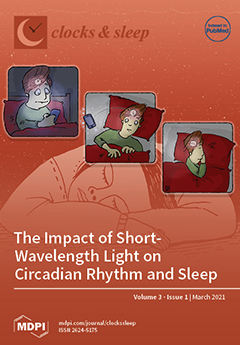Shift work is associated with adverse chronic health outcomes. Addressing chronic disease risk factors including biomedical risk factors, behavioural risk factors, as well as sleep and perceived health status, affords an opportunity to improve health outcomes in shift workers. The present study aimed to conduct a systematic review, qualitative synthesis, and meta-analysis of non-pharmacological interventions targeting chronic disease risk factors, including sleep, in shift workers. A total of 8465 records were retrieved; 65 publications were eligible for inclusion in qualitative analysis. Random-effects meta-analysis were conducted for eight eligible health outcomes, including a total of thirty-nine studies. Interventions resulted in increased objective sleep duration (Hedges’ g = 0.73; CI: 0.36, 1.10,
k = 16), improved objective sleep efficiency (Hedges’ g = 0.48; CI: 0.20, 0.76,
k = 10) and a small increase in both subjective sleep duration (Hedges’ g = 0.11; CI: −0.04, 0.27,
k = 19) and sleep quality (Hedges’ g = 0.11; CI: −0.11, 0.33,
k = 21). Interventions also improved perceived health status (Hedges’ g = 0.20; CI: −0.05, 0.46,
k = 8), decreased systolic (Hedges’ g = 0.26; CI: −0.54, 0.02,
k = 7) and diastolic (Hedges’ g = 0.06; CI: −0.23, 0.36,
k = 7) blood pressure, and reduced body mass index (Hedges’ g = −0.04; CI: −0.37, 0.29,
k = 9). The current study suggests interventions may improve chronic disease risk factors and sleep in shift workers; however, this could only be objectively assessed for a limited number of risk factor endpoints. Future interventions could explore the impact of non-pharmacological interventions on a broader range of chronic disease risk factors to better characterise targets for improved health outcomes in shift workers.
Full article






